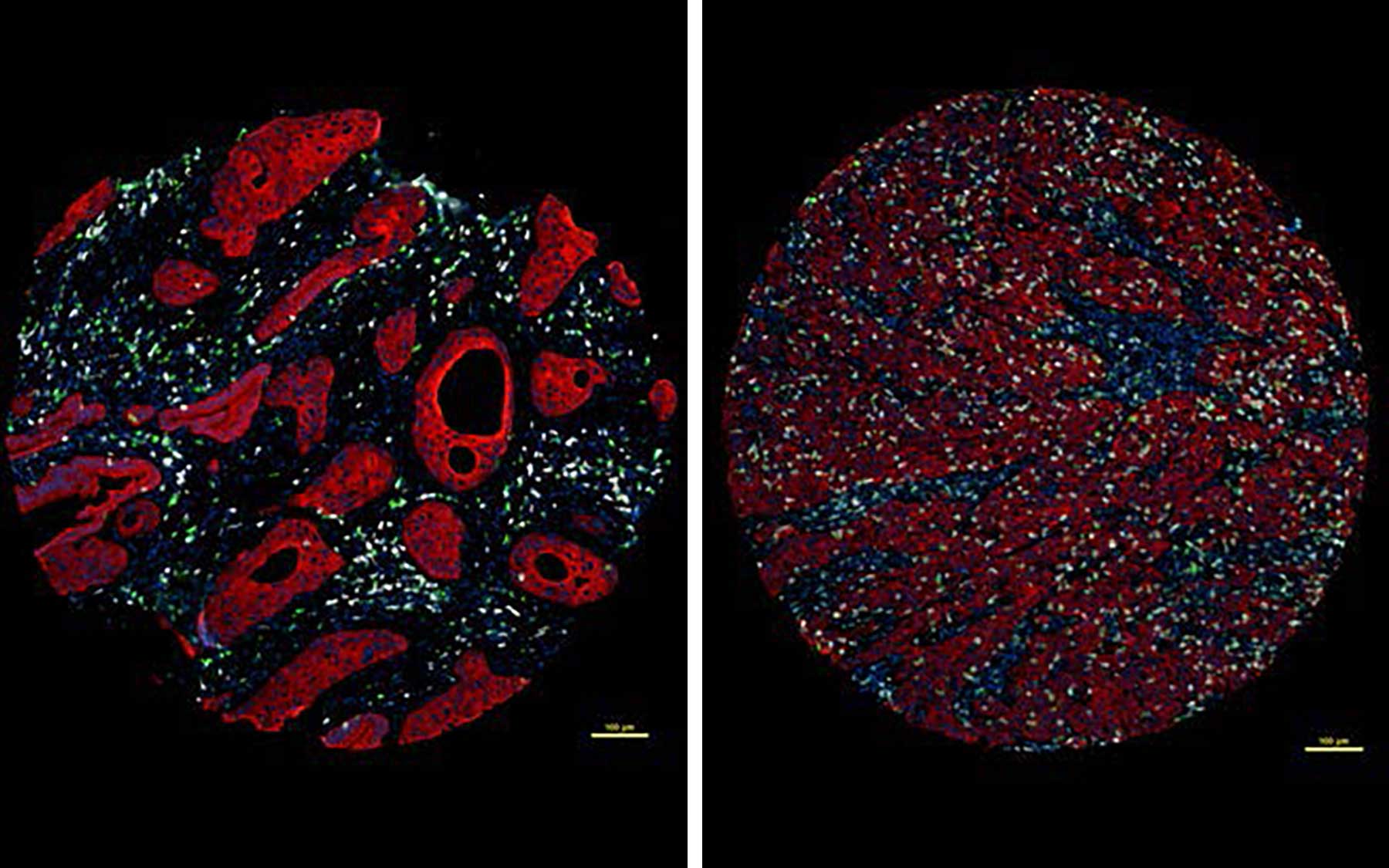Everyone knows how important the immune system is—our lives utterly depend upon it. Its role in fighting bacteria and common viruses is something we take for granted. Few people know that its protection extends to viruses that can cause cancer. And yet cancer is so common. When it strikes, is the immune system letting us down?
Not really. Professor Douglas Fearon and colleagues have spent years studying a variety of mechanisms employed by cancer cells to fool the immune system. Here we see pictures that dramatize the impact of one of these mechanisms. It involves suppression of the immune response by cells called fibroblasts that live in stroma, the tissue (black in these images) surrounding tumors. On the left, an undeterred pancreatic tumor. The startling fact about this picture is that we see the cancer cells (red-stained) hiding in plain sight from cells of the immune system (green and white dots). It seems as if the immune cells are swarming all around the cancer, but curiously are not engaging it.
The immune cells swarm because they recognize foreign-looking proteins, called antigens, on the surface of the aberrant cells. But in order to kill such cells, T-cells literally have to reach out and touch them, initiating a train of events that should culminate in the destruction of at least some of the cancer cells. Fearon and colleagues are testing an already-approved drug called AMD3100 combined with PD-L1, a checkpoint inhibitor drug normally ineffective in pancreas cancer. The aim is to block a key signal sent by cancer-promoting fibroblasts, effectively uncloaking cancer cells and revealing them to killer T-cells of the immune system. In the right image, we see immune cells engaging with the cancer. In mice, this sort of engagement has resulted in dramatic reduction of pancreatic tumors. A clinical trial in pancreatic cancer patients is in progress, with results due soon. Stay tuned!
Used with kind permission of Dr. Gillian Griffiths, University of Cambridge, UK
Written by: Peter Tarr, Senior Science Writer | publicaffairs@cshl.edu | 516-367-8455
About

Douglas Fearon
Professor
Cancer Center Member
M.D., Johns Hopkins University School of Medicine, 1968

One thought on “One experiment: When cancer is hiding in plain sight”
Comments are closed.